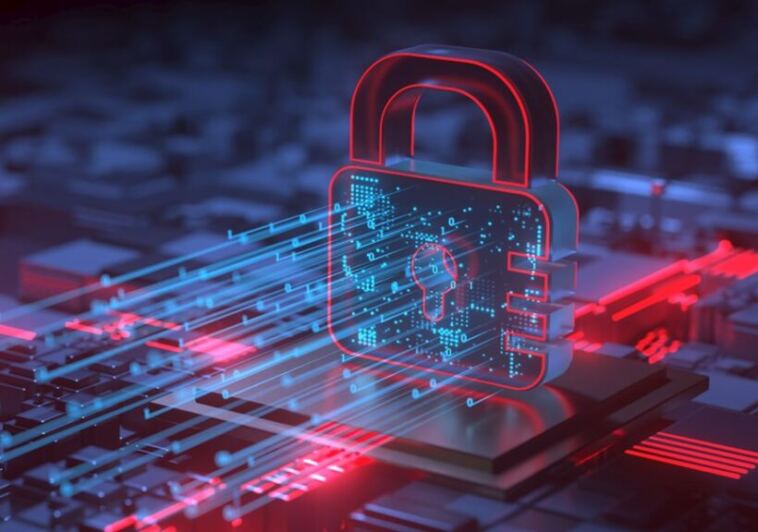- Like
- SHARE
- Digg
- Del
- Tumblr
- VKontakte
- Flattr
- Buffer
- Love This
- Save
- Odnoklassniki
- Meneame
- Blogger
- Amazon
- Yahoo Mail
- Gmail
- AOL
- Newsvine
- HackerNews
- Evernote
- MySpace
- Mail.ru
- Viadeo
- Line
- Comments
- Yummly
- SMS
- Viber
- Telegram
- JOIN
- Skype
- Facebook Messenger
- Kakao
- LiveJournal
- Yammer
- Edgar
- Fintel
- Mix
- Instapaper
- Copy Link
Introduction
Anyone spending a lot of time on their mobile phone will already be familiar with the positives and negatives of constant connectivity.
Convenience is often the main benefit cited when discussing the rising use of smartphones and other mobile devices, but what if the downsides to using mobile devices outweigh the benefits?
This article will explore mobile devices, cybersecurity, and why adopting smart security practices is essential.
Threats to Security in Mobile Devices
According to the Pew Research Center, 85% percent of Americans own a smartphone. That means that hundreds of millions of people are relying on smartphones to keep them connected to the rest of the world.
For many, this includes granting them easy access to their bank accounts, their social media accounts, and even their gaming accounts. The scale of the connectivity that smartphones offer is incredible.
Most people even have several email accounts, and divert their important emails and personal emails to separate accounts for increased efficiency.
But what happens when an unauthorized party gains access to your phone? How much of your life would they uncover? This is the question billions of people – at least five billion of them, to be more exact – are asking themselves as the threats to their devices and private information grow.
Whether you are using a phone for personal use or are more concerned about mobile devices being used to impact your business, there are plenty of reasons to worry.
Let’s take a closer look at three of the main threats to mobile devices and how you can recognize and avoid them moving forward.
Ransomware and Phishing
Ransomware is a kind of security attack that locks down your device. You might not be able to exit a specific app or be unable to do anything more than turn your phone on and off. This can be an incredibly frustrating situation and can be incredibly stressful and scary.
It is not uncommon for ransomware attackers to demand money in exchange for returning access to your device. Some of them even threaten to send pictures to your contact list if you don’t follow their instructions. Unfortunately, there is no guarantee that your device will be returned to you even if you pay.
If you’re wondering how ransomware makes its way onto mobile devices, phishing is the answer. Sometimes users are sent SMS messages that look like they are from a trusted source. They will then click on a link or a file in the message and inadvertently install the offending software.
Mining Attacks
Cryptocurrency continues to be a hot topic in the finance industry. One element of the currency few people understand is the process of acquiring cryptocurrency tokens. While you can purchase tokens using real money, or sell something for cryptocurrency, these are not the only ways it can be acquired. In fact, the more popular option is to find it for free. This is done via the use of mobile devices and computers and can often lead to overheating and a rapid loss of battery power.
Over time, this can cause permanent damage to your phone and also puts you at risk of further attacks.
What are the Consequences of Cybersecurity Attacks on Mobile Devices?
Cybersecurity attacks, regardless of their exact form and method, can be devastating. For individuals, their private information will be in the hands of strangers with illintent.
From threatening them with the reveal of sensitive photos or videos if they don’t pay up to wiping their bank accounts, the threat to personal safety and financial wellness posed by cybersecurity attacks is considerable.
This doesn’t even consider the damage that losing an entire device, including all the images, voice memos, and other personally significant items on it, can do to your sense of well-being. If your phone doesn’t back up automatically to the cloud, losing that data permanently can be devastating.
Businesses and other entities stand to lose quite a bit from cyberattacks, too. In 2022, for example, the average cost of data breaches was more than $4 million per breach, but they can be far more expensive.
The worst-case scenario can translate into billions of dollars. Even this doesn’t represent the true cost of significant breaches, however, because it doesn’t take reputation loss into account. High-profile breaches can permanently tarnish a business’s image in the public eye, lowering overall income for years.
Mobile-connected Devices
We’ve talked a lot about mobile devices such as smartphones and why it is important to secure them. What we haven’t talked about yet is mobile-connected devices.
Much like a real-life virus, mobile security threats don’t only impact the device in question. They spread from one device to another, steadily adding to their wake of destruction. If you’ve ever worked in an office when someone catches a cold, you know exactly what we’re talking about. The illness makes short work of employees, infecting many of them within a few days. Mobile threats do the same.
Let’s look at what we mean by “mobile-connected devices” and how they stand to be impacted by security threats on connected mobile devices.
Rapid Development
To illustrate how quickly and completely technology has revolutionized the world, let’s look at a brief history of medical records.
A few decades ago, medical records were physical things. They were often stored in folders either in a hospital’s archives or at a library. When stored in offsite libraries, recalling these records was a long process, and sometimes patients would wait for several weeks before they arrived. This placed a hold on their treatment and was a detriment to quick care in general. Even worse, sometimes records were lost or inaccurate due to errors by staff. Security was often lacking during this time, too, as medical records were easy to access by unauthorized parties.
Today, medical records are digitized. This makes it much easier for medical staff to locate them quickly and improves their accuracy thanks to the ability to complete them quickly and efficiently, with the patient standing by to answer questions. Overall, this digitization has proven a net positive for patients and medical staff everywhere. Unfortunately, there are growing downsides that place medical records and patient safety and privacy at risk.
The most obvious risk to digitalization is cyberattacks. We’ve already seen incidents that leave hospitals reeling from data breaches, some of which include an incredible amount of patient data. And while security methods are evolving along with threats, these measures are only as strong as the weakest device connected to the system. This often translates to mobile devices. As medical staff uses mobile apps and authentication to help organize and access medical records quickly, security threats impacting mobile devices stand to introduce new threats to digitized medical records, even if the system has been designed to protect private data. The computers and servers housing the medical records might be secure, in other words, but all it takes is a single weak link to cause massive issues.
This is just one example of a mobile-connected device being significantly impacted by mobile security (or the lack of it). Here are a few more examples of mobile-connected devices which illustrate the importance of cybersecurity measures on smartphones and tablets.
Connected Ambulances
Did you know that ambulances are typically connected to hospitals via a software interface? This allows the medical personnel to alert the receiving hospital before they arrive so that medical staff can prepare to provide quick and lifesaving support. This is a relatively recent development implemented within the past couple of decades, but it has already made a huge impact. Patients’ medical records and current vital signs can now be accessed by emergency room staff before they arrive at the hospital to run preliminary tests and prepare necessary life-saving equipment if needed.
With this ease-of-access to critical health information, it is vitally important to consider what would happen if the system suddenly went down. Perhaps even more distressing, what would happen if every bit of data sent from ambulances to hospitals and vice versa were accessible by unauthorized parties? This is a particularly insidious and damaging cyberattack opportunity.
Driverless Vehicles
Another area where mobile-connected devices stand to be compromised is the autonomous driving industry. The idea of driverless vehicles is quickly gaining momentum in the United States and worldwide. While not everyone is enthusiastic about the idea, many people recognize the convenience that they could bring. For individuals who can’t drive but also don’t have money to pay human drivers,autonomous driving services stand to be more affordable in the long run. These benefits are true of larger-scale transportation, too, with some countries considering the implementation of driverless buses.
In order to safely make use of autonomous driving vehicles, remote access must be available. This is often done via mobile devices so that someone is able to access the vehicle at all times and allows human overseers to override program information when problems are detected. There are two problems here. First, autonomous vehicles themselves pose opportunities for cyberattacks. If the software used to design and operate them falls under attack, for example, routes could be disrupted and even diverted entirely. Secondly, if criminals are able to hack the remote access device, they could not only divert the vehicle but also make rerouting it incredibly difficult.
As you can see, the reasons to practice effective mobile cybersecurity extend far beyond the loss of your private information. If you have access to any kind of privileged information and your device is compromised, how much damage could the criminals responsible do? How much money would be lost, private information leaked, or months of work stolen? A lack of security on your personal device has a potential rippling impact that could cause serious harm.
Cybersecurity Best Practices
While you might want a revolutionary set of tips to make yourself invulnerable to cybercrime, the fact of the matter is that common sense remains the most important safeguard. Don’t click links or attachments without confirming that the person you believe sent the email did send the email. Don’t reuse passwords and change your passwords often. Be on the lookout for breaches, too. Strong passwords are also key; words and dates related to your life (such as your birthdate) are no longer enough.
If you are an organization, our recommendations are even simpler. Hire a professional, be it an in-house team of experts or an experienced security firm, to protect your business, your employees, and your customers. Once you have an effective and dependable team in place, listen to them. Security needs fluctuate along with trends in cyberattacks, and you might need to adjust how you do things now and then. You should also routinely test that your current security solutions are still working as intended and that no one has gained access to your servers. This last tip is especially important, as some of the most notorious breaches in history took place due to outdated security measures and a lack of adequate network monitoring.
Both personal and business users need to follow common sense, in other words, to keep themselves, their devices, and everyone else safe.
Training for a Career in Cybersecurity
Are you interested in shaping the cybersecurity industry? The world needs dedicated and passionate professionals ready to revolutionize the security industry. If you think you have what it takes to thrive in this setting, why not consider pursuing a cybersecurity graduate degree? While undergraduate degrees focused on cybersecurity exclusively are still relatively rare, the number of graduate programs is growing rapidly. Many respected institutions offer students comprehensive master’s and doctoral degrees that prepare them for a long and successful career.
In terms of salary,cybersecurity professionals are typically quite well compensated. A master’s in cybersecurity salary, for example, is estimated to be more than $100,000 per year. This money can be maximized by attending a university with experience and accreditation in the industry. St. Bonaventure University, for example, offers a very respected cybersecurity degree designed to help its students hit the ground running.
What should you do if you are a victim of cybercrime?
Just as you would reach out to law enforcement if you were the victim of an in-person crime such as robbery, if you are a victim of cybercrime, you should also reach out to the police as soon as possible. Note that this is important even if sensitive information is in question! Law enforcement officers have seen it all – you don’t need to be embarrassed. Be honest and law enforcement will handle the situation respectfully and compassionately. Similarly, be honest about the circumstances surrounding the security breach or other incidents. Many of today’s cybersecurity threats are designed specifically to embarrass victims and make them less likely to talk to the police. For the best chance possible of catching the people who attacked your device (or who are currently attacking your device, if the issue is ongoing), you must be open and honest with those trying to help you.
Beyond reaching out to law enforcement, if you realize that your device is under attack, you should change your passwords on all of your other devices and accounts. If you have fingerprint scanning enabled as a method of authentication, turn it off if you are able to do so. It’s important to prioritize important accounts; changing the password to your email, for example, can make it more difficult for attackers to gain access to your other accounts, and changing your bank password should be a top priority.
Once the dust has settled and you take stock of your losses, the next step is to follow good cybersecurity methods that can help you avoid such a problem in the future.
Conclusion
Mobile apps are here to stay, at least for the foreseeable future, and it is important to adapt your security habits to keep your information safe. Keep our tips in mind as you navigate the web, and you’ll have the best chance of avoiding future cyberattacks.


